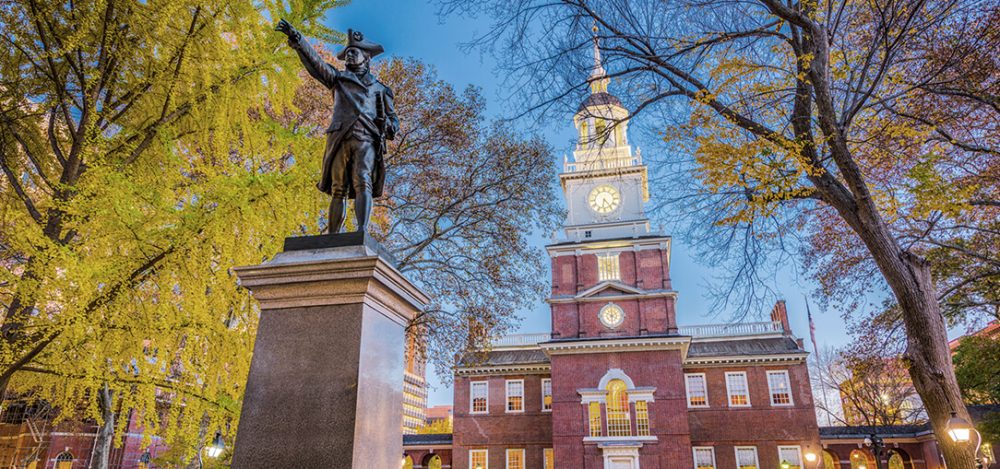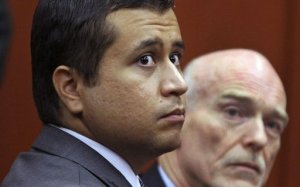
by Christopher Paslay
Ignoring the dysfunctional behavior of troubled youth perpetuates chaos in American public schools and robs children of their right to learn.
As “Justice for Trayvon” rallies pop-up in cities across America over the acquittal of neighborhood watch captain George Zimmerman, a relevant fact central to the outcome of the trial has been universally ignored: that Trayvon Martin assaulted Zimmerman, striking, straddling, and then beating the Hispanic man to the point where Zimmerman feared for his life. One juror has stated publicly that she had “no doubt that George feared for his life,” and that “his heart was in the right place.”
These statements—and the jury’s verdict (a verdict that former President Jimmy Carter agrees with)—were made after six women jurors considered all the evidence in the three-week long trial, including testimonies from over 50 witnesses, analysis of the bullet wound in Martin’s chest that showed that he was on top of Zimmerman, pictures of Zimmerman’s broken nose and lacerations to his scalp, 911 calls from panicked neighbors, and Zimmerman’s own video account of the incident, among many other things. Yet somehow these facts and all the trial evidence gets pushed aside by the “Justice for Trayvon” folk. The propagandistic narrative of an innocent young African American boy coming home from a 7-Eleven with Skittles and an iced tea who was stalked and murdered in cold blood through no fault of his own continues to be put forward.
The gaping difference between the trial evidence and the narrative of Martin supporters—which now officially includes U.S. Attorney General Eric Holder and the Department of Justice—is quite alarming. When young people commit criminal acts—such as assault, robbery, drug possession, and weapons infractions—it is difficult for some people to hold them accountable. This is especially the case when these teens are African Americans, because doing so is politically incorrect and somehow unjustly blaming “the victims” for their problems.
Take the Philadelphia student activist group Youth United for Change, for example. In January of 2011, YUC published the report “Zero Tolerance in Philadelphia: Denying Educational Opportunities and Creating a Pathway to Prison,” which argued that the Philadelphia School District’s harsh discipline policies were turning innocent youth into criminals, especially minorities. In a nutshell, the study absolved chronic rule-breakers of basic responsibility for their own behavior and portrayed violent and unruly students as powerless victims caught in an oppressive disciplinary system; one of the more controversial claims was that the presence of police officers and metal detectors in schools was causing minority students to act out.
The euphemism “kids will be kids” was used in defense of the report’s findings by a number of members of the Philadelphia public school community.
But the violence facing Philadelphia public schools at the time was a little bit more than simply “kids being kids.” Consider these facts: From 2005-06 through 2009-10, the district reported 30,333 serious incidents. There were 19,752 assaults, 4,327 weapons infractions, 2,037 drug and alcohol related violations, and 1,186 robberies. Students were beaten by their peers in libraries and had their hair pulled out by gangs in the hall. Teachers were assaulted over 4,000 times.
In the 2007-08 school year alone, there were nearly 15,000 criminal incidents reported in Philadelphia public schools. According to data published in the Inquirer, 1,728 students assaulted teachers, 479 weapons were discovered inside elementary and middle school hallways and classrooms, and 357 weapons were found in high schools.
In 2012, the Philadelphia Inquirer won a Pulitzer Prize for bringing this information to light in a series called “Assault on Learning.” Amazingly, several months after the series won the Pulitzer, Philadelphia School District officials, bowing to pressure from the U.S. Department of Education’s Office for Civil Rights, actually decided to ease the Philadelphia School District’s student code of conduct. The reason? The DOE published a report claiming that minority students were being disproportionally suspended and expelled from school because of racism of both the conscious and unconscious variety (although the report didn’t include a single documented case of discrimination against a student by a teacher).
Fast forward to Trayvon Martin. Just as groups like YUC try to portray violent and unruly youth as victims of an unjust system, so do the “Justice for Trayvon” folk portray Martin as an innocent young boy who was murdered through no fault of his own. Many people believe that the tragedy—or the crime—was that Zimmerman profiled Martin as a criminal, which is what Martin supporters insist eventually led to the boy’s death. But legally speaking, this was not the case, which is why Zimmerman was acquitted. According to the law, it is not illegal to watch someone from your car, or to get out and follow them; if it were, news reporters, paparazzi, private investigators, and single men interested in courting attractive women would all be behind bars.
According to the law (and the jury’s verdict), Zimmerman following Martin was not reckless or irresponsible enough to set in motion the events that eventually led to Martin’s death, which is why Zimmerman was found not guilty of manslaughter. The act that led to Martin’s eventual death was when Martin decided to strike and attack Zimmerman, pound his head on the cement, and to put the Hispanic neighborhood watch captain in a position where he feared for his life. Remember, when Zimmerman approached Martin, Martin could have done any one of the following: walked or ran away; went into his house; or kept a safe distance and tried to communicate. According to the evidence and the verdict of the jury, he did none of them. He chose to attack Zimmerman, an act that directly led to his own death.
But it is easier for Martin supporters to absolve Martin of all responsibility for his death. Like YUC’s report “Zero Tolerance,” which absolves violent Philadelphia school students of responsibility for their behavior in classrooms, Martin was simply a “kid being a kid.” A kid, mind you, who allegedly called Zimmerman a racist name (creepy-ass-cracker); a kid who was suspended from school not once but three times; a kid who was caught with a marijuana pipe and a baggie with drug residue; a kid who was kicked out of school for graffiti after he was caught with a “burglary tool” and a bag full of women’s jewelry; a kid who had texts on his Twitter account describing an attack on a bus driver; a kid who had a video on his cellphone of two homeless men fighting over a bicycle; a kid who had pictures of underage nude females on his cellphone, as well as pictures of marijuana plants and a hand holding a semi-automatic pistol; a kid who was staying at his father’s girlfriend’s house because he’d been kicked out of his mother’s house for getting into trouble; and a kid who, according to the verdict of the jury, chose to attack and beat a Hispanic man mixed-martial-arts-style instead of simply walking away and going into his house which was not even 70 yards away.
This is the kid whom President Obama has made his surrogate son, and the kid whose memory Obama has stated we need to “honor.”
Is Trayvon Martin’s death a tragedy? Absolutely. Did George Zimmerman make mistakes and bad decisions? No doubt. But so did Trayvon Martin.
Which leads back to the question of violence in society and our education system: Why are America’s public schools so dysfunctional and violent? Why, according to the FBI, are 91 percent of black victim homicides committed by black offenders, and 14 percent of white victim homicides committed by black offenders (twice as many as the other way around)?
Maybe because society continues to absolve people like Trayvon Martin of all responsibility for their actions, and categorizes dysfunctional youth behavior as simply “kids being kids.”




